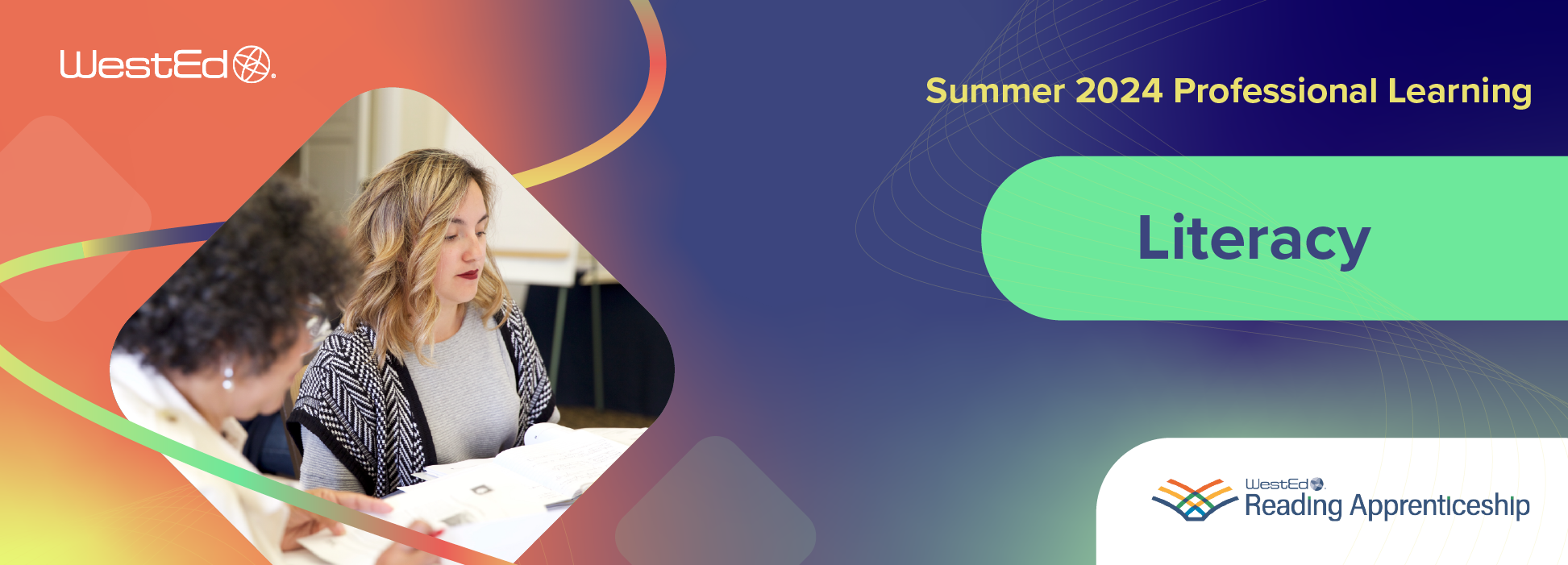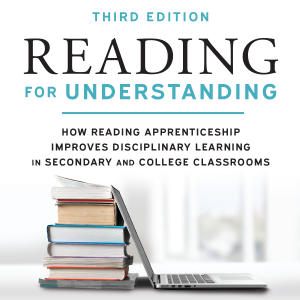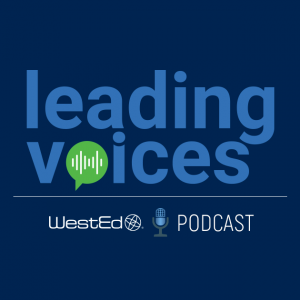Bridging Literacy Gaps With Reading Apprenticeship Summer Professional Learning
Posted on
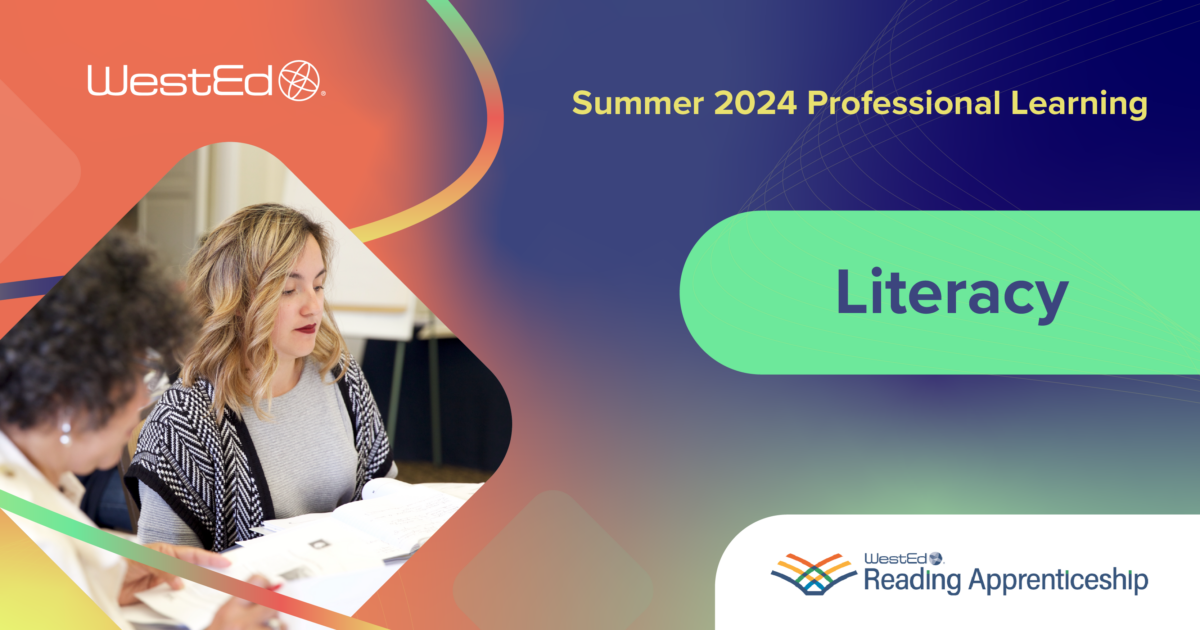
The profiles in this post first appeared on the Reading Apprenticeship website and appear here with permission. Stay tuned for more facilitator spotlights!
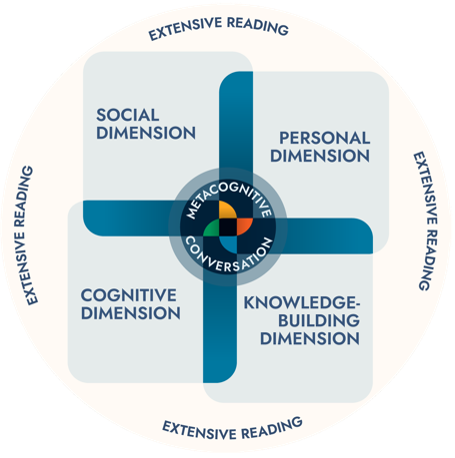 The recent National Assessment of Educational Progress (NAEP) scores in reading, writing, and math have ignited a sense of urgency among educators, parents, and communities. The importance of literacy, not just as a skill, but as a vital component to success in school, career, and civic life, is now more pronounced than ever.
The recent National Assessment of Educational Progress (NAEP) scores in reading, writing, and math have ignited a sense of urgency among educators, parents, and communities. The importance of literacy, not just as a skill, but as a vital component to success in school, career, and civic life, is now more pronounced than ever.
States, districts, and schools are actively seeking solutions, realizing that student engagement is the crucial first step to increasing literacy across subject areas.
The Reading Apprenticeship classroom offers a transformative pathway to engagement. The approach doesn’t just facilitate learning, but it does so through four interacting dimensions of learning. These dimensions are honed through metacognitive conversation, which delves into students’ thinking processes.
Reading Apprenticeship works. Over 25 years of rigorous research, including multiple randomized controlled studies, have consistently shown that Reading Apprenticeship leads to significant positive outcomes for students in literacy, content area learning, and academic success. Reading Apprenticeship classrooms consistently outperform their peers in classrooms without Reading Apprenticeship.
This blog post highlights the voices of six educators who have received training in the Reading Apprenticeship framework. Read on to learn how they are helping students develop high-level literacy skills, including thinking critically, synthesizing information, and constructing evidence-based arguments.
visit our Summer Professional Learning web page.
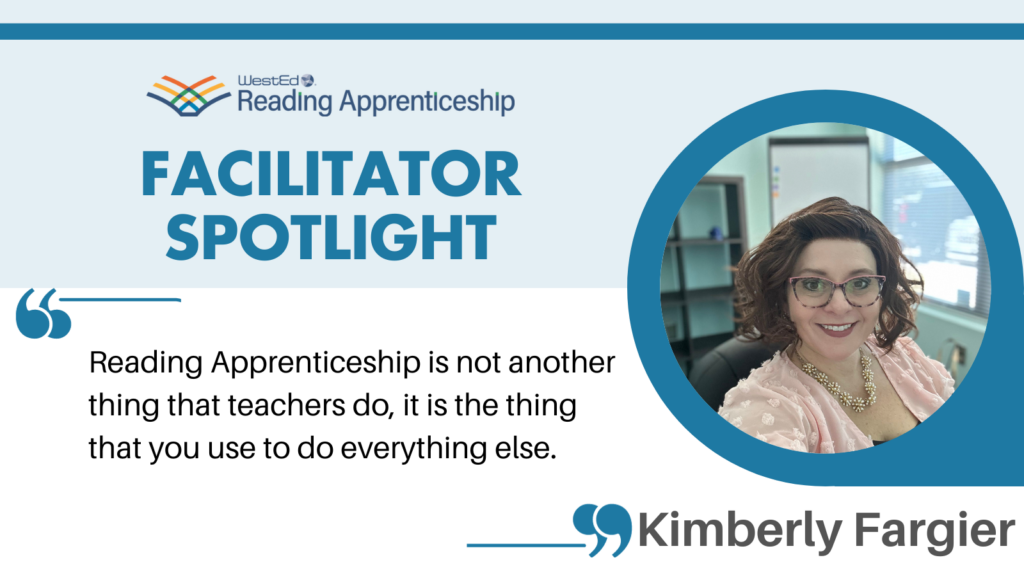
The Power of Metacognitive Conversations
Name: Kimberly Fargier, Facilitator
Location: San Antonio, Texas
Years of Teaching: 24
If you had to describe yourself as an educator, what words would you use and why?Responsive, creative, engaging, inspiring, challenging, and welcoming. After my 1st year teaching, I quickly discovered that most adults and students enter my life and classroom with libraries full of negative schema when it comes to English; the vast majority “hate English.” This is the line in the sand for me. I strive to be the most non-English English teacher you can imagine. Wearing costumes on normal days of the week to make a student smile, asking probing questions in purple pen rather than slaying a student’s composition in red and grading their confusion instead of a revision, throwing a birthday party for an 11th grader who has never had one, integrating themes related to humanity. We are all human. Humans thrive on challenge.
What drew you to Reading Apprenticeship?
Reading Apprenticeship called to me because it bridged the ever-widening gap between pedagogy and content delivery with practical examples spanning elementary school to college with relevant examples highlighting student and teacher voices. The Reading Apprenticeship framework is the answer—at the heart of it all is the student engaging in the metacognitive conversations. This is what is missing today! The teacher is doing the talking, not the student. In the Reading Apprenticeship classroom, students engage in frequent extensive readings where the dimensions of the framework come alive.
What is your go-to Reading Apprenticeship routine?
The most powerful, underutilized Reading Apprenticeship routine is the Personal Reading History.
Can you share a story about a time when you or a student had an “aha!” moment with Reading Apprenticeship?
Sitting in the hallway conferring with a student, I realized the power of the Personal Reading History. It was in that moment that this routine transformed from a beginning of the year activity to a pivotal assessment for me to set goals, get to know my students, and use throughout the year. Also, it helped me personalize the learning experiences and differentiate learning for my scholars for the rest of the year.
If you could describe Reading Apprenticeship in a sentence, what would you say?
Reading Apprenticeship is not another thing that teachers do; it is the thing that you use to do everything else.
What are you reading right now?
Currently, I am reading Ordinary Grace by William Kent Krueger.
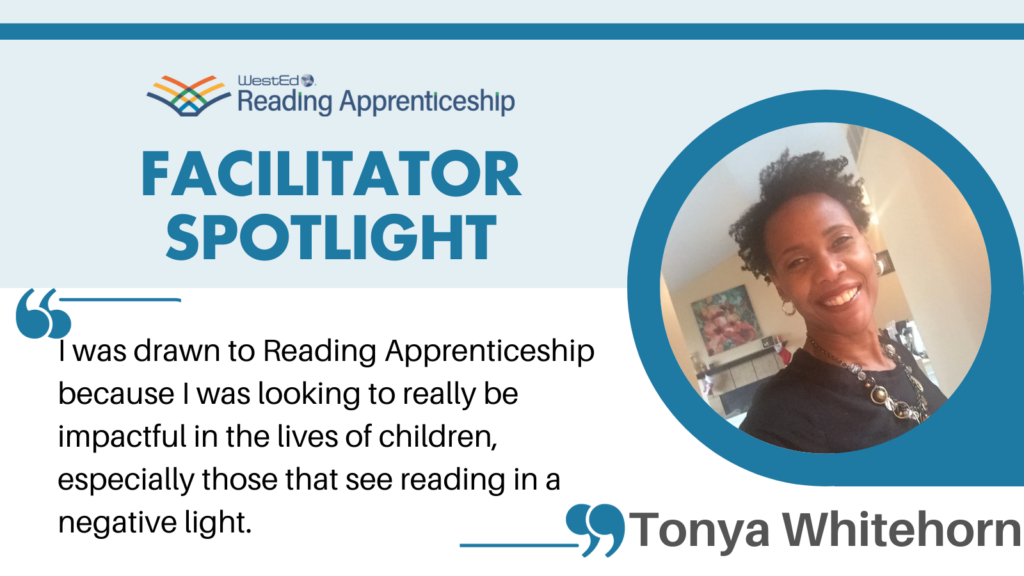
Helping Students Feel Safe in the Classroom
Name: Tonya Whitehorn, Facilitator
Location: Belleville, Michigan
Years of Teaching: 25
If you had to describe yourself as an educator, what words would you use and why?
I would describe myself as empathetic and caring. I understand many of the challenges that come with navigating curriculum and balancing our lives as students, parents, and so on.
I would also say that I am open and inquisitive. I love learning new things and improving the way I teach and relate to students.
I love using humor, and I think that I am relatable to students.
What drew you to Reading Apprenticeship?
I was drawn to Reading Apprenticeship because I was looking to really be impactful in the lives of children, especially those who see reading in a negative light. I thought the framework considers the whole child as an active learner in this process.
What is your go-to Reading Apprenticeship routine?
My go-to reading activity is the partner Think Aloud.
Can you share a story about a time when you or a student had an “aha!” moment with Reading Apprenticeship?
I have had many “aha” moments over the years. I think the biggest moments still come from showing my reading process. When I demonstrate the process and the vulnerability in questioning and making mistakes, it allows students to feel safe in the room, which then builds our social dimension, a critical component of the Reading Apprenticeship instructional framework.
If you could describe Reading Apprenticeship in a sentence, what would you say?
I would describe Reading Apprenticeship as an active process in positively impacting the reading experiences of our students.
What are you reading right now?
I am rereading Between the World and Me by Ta-Nehisi Coates.
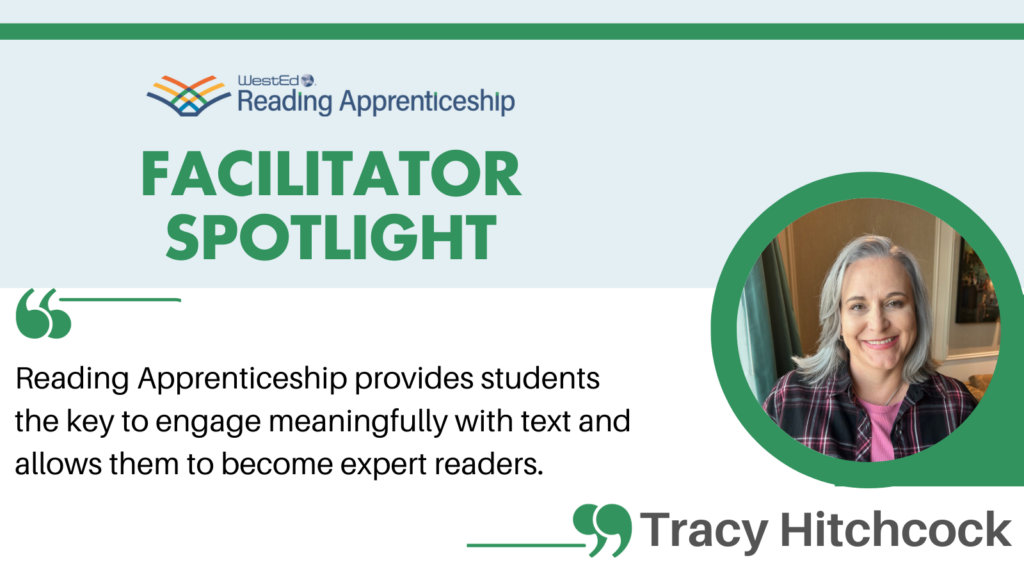
Making Connections Between the Reader and the Text
Name: Tracy Hitchcock, Facilitator
Location: Harlingen, TX
Years of Teaching: 29
If you had to describe yourself as an educator, what words would you use and why?
The six words I would use to describe myself as an educator are passionate, funny, caring, engaging, energetic, and compassionate. I love kids, and I think teaching is one of the most important jobs there is. Kids deserve the best education we can give them—each and every day.
What drew you to Reading Apprenticeship?
It just makes sense. Reading is not about strategies and programs. It is personal and individualized. It is about making connections between the reader and the text. I wish Reading Apprenticeship had been around when I was first teaching reading in middle school. Well, it was, but I didn’t know about it then. I feel like I was doing parts of it intuitively then. I was talking to kids about their reading histories and what they liked to read and making reading relevant. Now I want to let as many people as I can know about Reading Apprenticeship.
What is your go-to Reading Apprenticeship routine?
I like to use double-entry journals for a variety of purposes.
Can you share a story about a time when you or a student had an “aha!” moment with Reading Apprenticeship?
I’ve had many “aha” moments with Reading Apprenticeship, but one that stands out is doing the Personal Reading History with teachers and finding out how many negative experiences teachers have had with reading and how those experiences may impact the way they teach their students today.
If you could describe Reading Apprenticeship in a sentence, what would you say?
Reading Apprenticeship provides students the key to engage meaningfully with text and allows them to become expert readers.
What are you reading right now?
I am rereading Billy Summers by Stephen King.
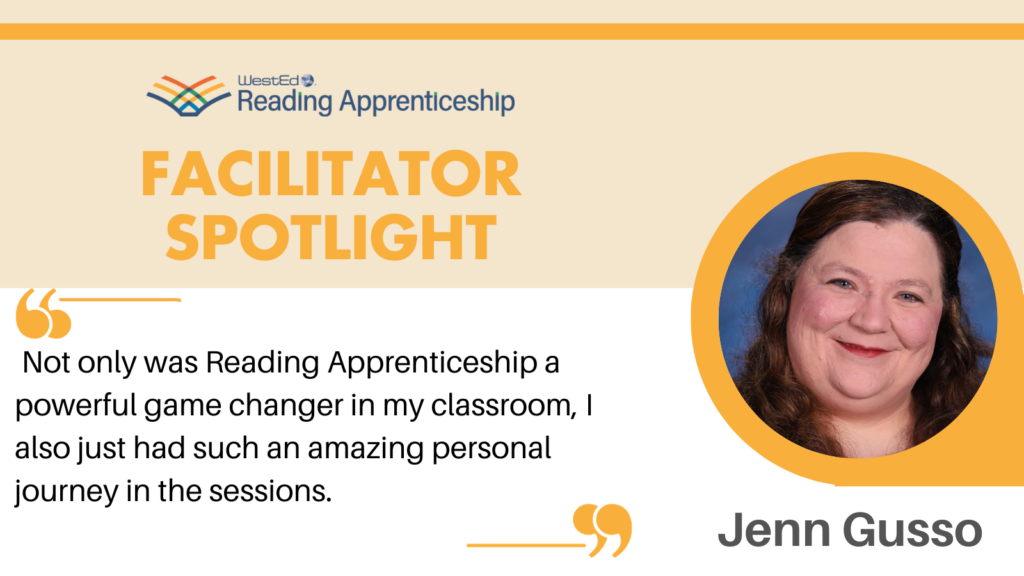 Giving Students a Toolbox for Approaching New Pieces of Text
Giving Students a Toolbox for Approaching New Pieces of Text
Name: Jenn Gusso, Facilitator
Location: Bel Air, MD
Years of Teaching: 18
If you had to describe yourself as an educator, what words would you use and why?
Relationship builder—I believe that getting to know students and their family members is the essential first step in being able to accomplish anything in the classroom. Joyful—I believe that, if we are not beacons of joy (even on the difficult days) for our students, we can’t even get to a place where learning can occur. Learner—Every year, my students bring so many new ideas—about the world and the texts that we are reading. I learn so much from them, about new approaches and new interpretations to texts. I also love professional learning and bringing new ideas to my classroom. Innovator—I always want to try new approaches. I am especially always looking for ways to subvert the traditional grading system, leveled classrooms, and many of the other practices that are “just the way that things are done.” In order to really create equitable learning environments for all students, we have to be willing to take some risks. Believer—I believe that all students are capable of greatness. It is our job to provide a safe space to cultivate their greatness, and, if we do, greatness always follows.
What drew you to Reading Apprenticeship?
I love any professional learning—and the teaching of reading—so, when the Maryland State Department of Education offered Reading Apprenticeship professional learning, I was in from the start. However, I had no idea how grateful I would be for that journey. Not only was Reading Apprenticeship a powerful game-changer in my classroom, I also just had such an amazing personal journey in the sessions. I learned more about myself as a reader and a teacher and became part of this amazing community!
What is your go-to Reading Apprenticeship routine?
Having to choose between the Golden Line Protocol and the Reciprocal Think Aloud is basically impossible.
Can you share a story about a time when you or a student had an “aha!” moment with Reading Apprenticeship?
I don’t know if I can think of a big “aha” moment, but I feel like there is a point every year where I suddenly look around and realize how the protocols have become such habits for students that I feel like “my job is done”—at least for that year—because I know that the students now have a toolbox that they can utilize to approach new pieces of text.
If you could describe Reading Apprenticeship in a sentence, what would you say?
Reading Apprenticeship is a way to empower a new generation of readers.
What are you reading right now?
I am rereading Zero Days by Ruth Ware and Culturally Responsive Teaching and the Brain: Promoting Authentic Engagement and Rigor Among Culturally and Linguistically Diverse Students by Zaretta L. Hammond.
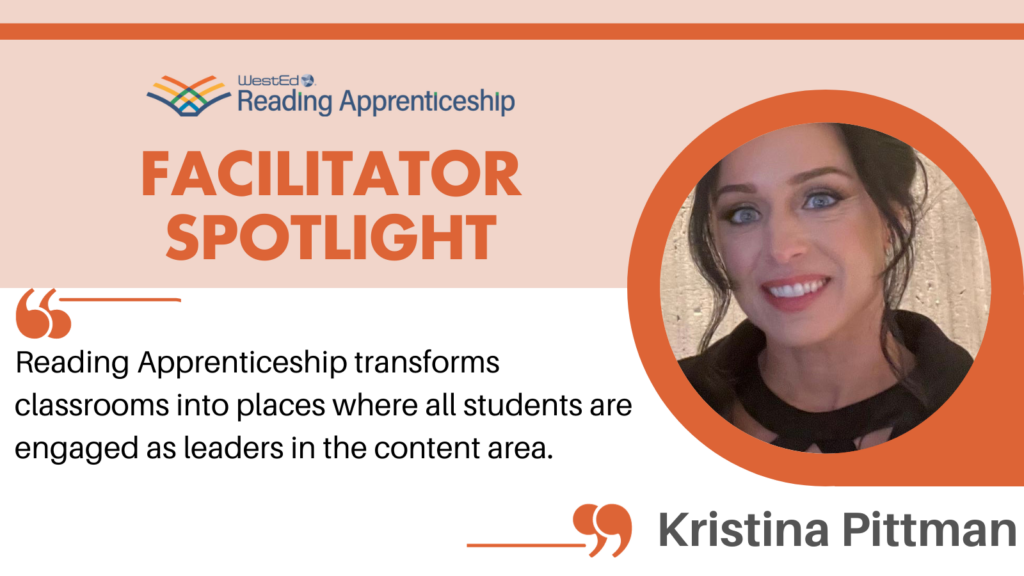 Encouraging Thoughtful and Relevant Conversations
Encouraging Thoughtful and Relevant Conversations
Name: Kristina Pittman, Facilitator
Location: Farmington Hills, Michigan
Years of Teaching: 25
If you had to describe yourself as an educator, what words would you use and why?Passionate. Motivated. Optimistic. Collaborative. Caring. Reflective. I am passionate because I love what I do; motivated because I have high expectations of myself, my students, and my colleagues; optimistic because our attitude frames our experiences; collaborative because I enjoy working with others; caring because I genuinely care about what others are experiencing; and reflective because I am always looking for new ways to reach students as I tweak my approach and lesson plans to adapt to the learners who are in front of me.
What drew you to Reading Apprenticeship?
When I was working on aligning the English Language Arts curriculum with the Common Core State Standards, I was immersed in the shift from teaching content to teaching skills. After researching several best practices with my colleagues, I discovered the Reading Apprenticeship model of instruction, and after one Reading Apprenticeship workshop, I was hooked. Many teachers in our district are now trained in Reading Apprenticeship, and for the last several years, we have been meeting as an interdisciplinary instructional professional learning team, discussing routines that are working for our students across and within the disciplines. As a result, our students are active participants in their learning process, which has led to improvements in our students’ literacy levels, content mastery, and writing assessment scores!
What is your go-to Reading Apprenticeship routine?
Number 1, Think-Pair-Share, and number 2, I Think/My Group Thinks/My Community Thinks. These routines set an important purpose for writing: students have an opportunity to articulate their thoughts independently, but they know that they are writing in preparation for discussion. Once they capture their thoughts in writing, sharing in a small group creates a safe environment for students to engage in thoughtful discussion. Students are more willing to share their thoughts with the whole class when they are reporting out what their group thinks, which increases student engagement and collaborative meaning making.
Can you share a story about a time when you or a student had an “aha!” moment with Reading Apprenticeship?
A student recently said, “I love that in this class we create our own questions, and as a result, we have the space to have important conversations that are relevant to us. Giving us the opportunity to create our own questions motivates us to find the answers to those questions.”
If you could describe Reading Apprenticeship in a sentence, what would you say?
Reading Apprenticeship transforms classrooms into places where all students are engaged as leaders in the content area.
What are you reading right now?
I am rereading All My Rage by Sabaa Tahir.
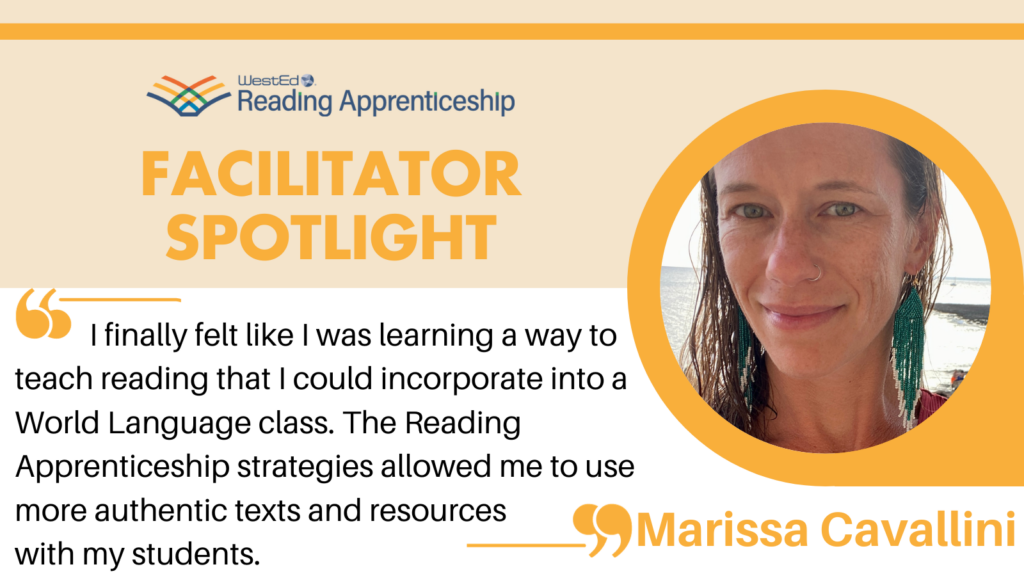 Using More Authentic Texts and Resources
Using More Authentic Texts and Resources
Name: Marissa Cavallini, Facilitator
Location: Chicago, IL
Years of Teaching: 14
If you had to describe yourself as an educator, what words would you use and why?Intentional: If I’m doing a task with my students, I want there to be purpose.
Creative: I enjoy creating new ways to engage with content.
Organized: Being organized helps me stay in control and provide my best for my students.
Understanding: Not every day is perfect, so it’s important that my students know they can have an off day and come back the next to try again.
Funny: The school day is long; everyone needs some humor.
Hardworking: I put a lot of effort into what I create for the best overall experience.
What drew you to Reading Apprenticeship?
I didn’t know how to teach reading well. It’s something that was emphasized by my district, but I never had the right guidance to do it. When Reading Apprenticeship professional development (PD) was offered to me, I was excited to learn new ways to interact with texts that I didn’t do when I was a student.
What is your go-to Reading Apprenticeship routine?
Think-Aloud
Can you share a story about a time when you or a student had an “aha!” moment with Reading Apprenticeship?
My personal “aha” moment with Reading Apprenticeship was when I first participated in the PD as a learner. I finally felt like I was learning a way to teach reading that I could incorporate into a World Language class. The routines that Reading Apprenticeship is based on allowed me to use more authentic texts and resources with my students.
If you could describe Reading Apprenticeship in a sentence, what would you say?
Reading Apprenticeship supports reading at all levels.
What are you reading right now?
I am rereading Tom Lake by Ann Patchell.
Register Today for Summer Reading Apprenticeship Professional Learning
Decades of research prove that Reading Apprenticeship services support teaching and learning across a range of demographics and educational settings. This research demonstrates that the Reading Apprenticeship approach results in more engaging and effective teacher assignments with significant impacts on student literacy and overall test scores.
Participants in our Essentials I and II offerings will receive a copy of the third edition of Reading for Understanding: How Reading Apprenticeship Improves Disciplinary Learning in Secondary and College Classrooms. The third edition of this landmark book in the field of adolescent literacy contains strategies for boosting the reading independence of middle, secondary, and college students.
visit our Summer Professional Learning web page.


